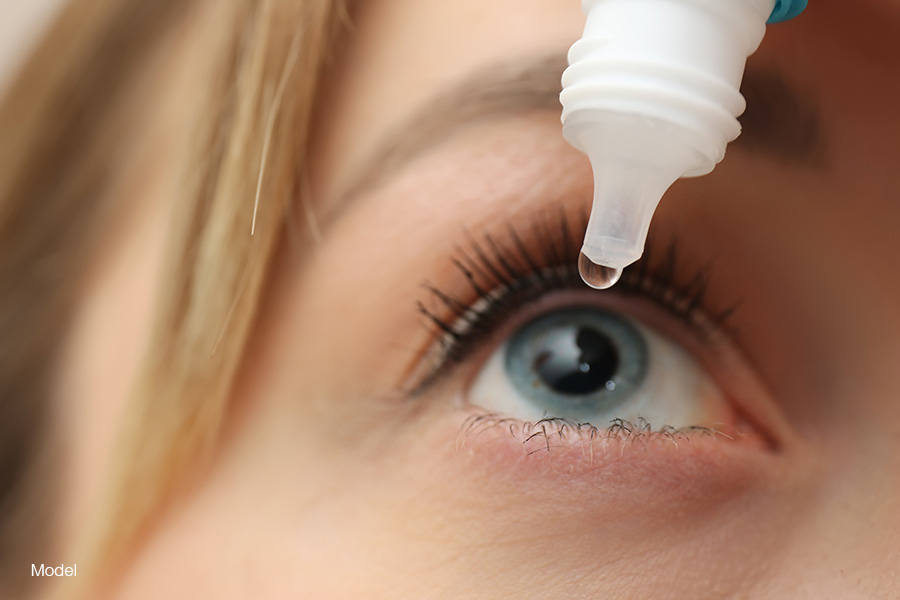Upneeq®: Can I Really Improve the Look of My Droopy Eyelids With Eye Drops?
Posted August 28, 2024 in Non-Surgical Treatments

Have you noticed that your upper eyelids have started to migrate downward, drooping and making you look tired or less alert than you are? If you want to do something about sagging eyelids but aren’t quite ready to take the surgical route to fix them, is there an effective solution? Thanks to Upneeq®, you’re in luck. Upneeq® is an FDA-approved prescription eye drop that offers visible improvement for eyelids with mild, moderate, or even severe sagging. In this blog, we’ll explore the causes of drooping eyelids and how Upneeq® can help.
4 Min Read:
Why Choose Upneeq®?
As the number of people working from home has increased, so has the number of people spending hours a day on video calls. Let’s face it: looking at yourself in the bottom corner of your computer screen may cause you to see problems you may not have caught otherwise. Maybe that’s why blepharoplasty (also called eyelid surgery) has stayed in the top five most popular cosmetic surgery procedures over the past two years.
However, not everyone needs or wants to undergo a surgical procedure to fix ptosis (sagging) in their eyelids. With just one drop daily, Upneeq® can elevate and refresh your sleepy-looking eyes.
What Causes Drooping Eyelids?
Blepharoptosis, or eyelid drooping, can be the result of several factors, including:
- Age: As you age, the muscles in your eyelids start to weaken, making them slowly start to sag.
- Skin Changes: Over time, your skin loses elasticity, which means that when it stretches, it no longer bounces back into place like it once did. This causes the skin around your eyes to sag.
- Eye Injury: The muscles that hold your eyelids up are called levator muscles. If you sustain an injury to your levator muscles, it can weaken them and cause your eyelids to droop. Pulling at your eyelids (to insert and remove contact lenses) or excessive rubbing can also damage the levator muscles.
- Myasthenia Gravis: This autoimmune condition causes the immune system to mistakenly attack healthy neuromuscular connections, weakening the muscles of the eyelids.
- Congenital Conditions: Some people are born with drooping eyelids because the levator muscle doesn’t form correctly.
What Type of Blepharoptosis Does Upneeq® Treat?
There are two types of blepharoptosis: congenital and acquired. Upneeq® can only treat cases of acquired blepharoptosis. However, congenital drooping eyelids can often be corrected with blepharoplasty surgery.
The best way to determine the cause of your drooping eyelid is first to visit an ophthalmologist to ensure that you don’t have an underlying health condition requiring attention. Once you understand the reason for your sagging lids, you can choose the best treatment for the problem.
How Does Upneeq® Work?
While the anatomy of the eye and eyelid is complicated, Upneeq® focuses on the levator palpebrae muscle, which contracts and raises the upper eyelid. Upneeq® contains oxymetazoline, which stimulates the levator muscle, lifting the eyelid anywhere from one to three millimeters.
Learn More About Upneeq® in Fresno
If you’re tired of looking tired and want to explore your options for elevating and rejuvenating drooping eyelids, it’s time to discover Upneeq®. To learn more about the treatment and find out if you’re a good candidate, call Aspire MediSpa at (559) 435-8477 or complete the online contact form.